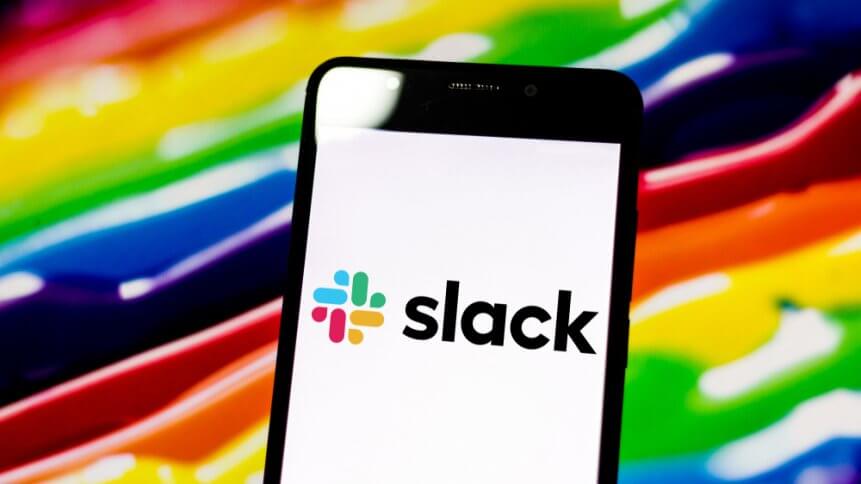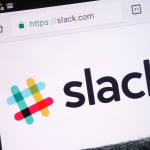Slack Connect – ready to replace email between businesses?

- The ubiquitous collaboration tool is moving beyond internal communications with Slack Connect
- The new platform could replace email what Slack hopes to be “the future of business communications”
- TechHQ talked to the firm’s VP product, enterprise, Ilan Frank
More than four years in the making, Slack’s new channel-based communications tool — Slack Connect — has come to life, with aims to serve “the future of business communication.”
“The introduction of Slack Connect marks a major leap forward in our mission to transform business communication and make people’s working lives simpler, more pleasant and more productive,” said Slack CEO, Stewart Butterfield.
In simple terms, Slack Connect allows different organizations to come together in a single Slack channel, with aims to replace messy email chains.
A new form of communication
Founded in 2009 as an internal messaging tool, and reaching a peak of 12.5 million concurrent users in March this year, Slack is now synonymous with internal collaboration and messaging, with organizations using it as a communal social space, be it for scheduling meetings, sharing proposals, or exchanging GIFs. Users now comprise anything from national law firms to ‘three-person dental practices in the North of England’, to paraphrase Butterfield during the launch announcement.
Slack Connect is a significant new direction, aiming to bring the core concept of the app beyond the walls of a single organization, to essentially replace email as a go-to means of project collaboration with external partners.
“Companies that use Slack have understood that the value of it far surpasses email for internal collaboration. So, there is no fundamental reason why we can’t do the same for external collaboration,” Slack’s VP product, enterprise, Ilan Frank, told TechHQ.
Slack thinks businesses could now be ready to depart with email as the main means of business communications. Email lacks “real time”, said Frank, “lacks security, with social engineering one of the most prevalent ways of hacking into an organization”, and is “really not a platform for anything beyond basic communication.”
Security inside out
The most obvious concern about using Slack to communicate with external stakeholders is how secure the tool is, and that’s been one of the core focuses of Slack Connect’s development, with extensive security features baked in to ensure users can “set the guardrails” and have peace of mind that they are actually talking to who they think they’re talking to, especially with the platform allowing up to 20 organizations to join a channel at the same time.
“One of the things that we’re building right now, it’s a feature called verify organizations,” Frank said. The process includes identifying all organizations and ensuring there aren’t any bad actors inside the network.
“We’re actually going to go through all the organizations, and we have 41,000 of them that already are participating right now in a shared channel –that will give assurance that when you work inside this network, you’re actually connecting to the real company. For example, when you connect to IBM, you know that you’re connecting to the real IBM.
“Other than the verified organizations, there’s also going to be ways to basically set the permissions on the other side, so that you can ensure that the people that connect to your information from the other side are just the people that you’ve invited into that channel.”
This is a feature missing from email, and Frank predicts “it will reduce things like phishing and social engineering.” Slack Connect also factors in information governance by design: “information governance is making sure that other organizations’ access to this information complies with your business rules or with your clients and regulatory needs.”
Slack connects all
When asked how Slack Connect would be used in practice, Frank told TechHQ that across industries, this new form of communication is set to promote more efficient, productive collaboration which amount to more effective solutions.
“We’ve already seen for the COVID-19 response, for example, different medical communities coming together to share what they’re learning, so that they can come up with a solution faster.” In the struggling education sector, “universities are coming together, and sharing best practices on how to do remote learning using Slack Connect.”
Frank also ran us through a scenario of how multinational food delivery platform Deliveroo has already put the tool to use: “Deliveroo has a very interesting integration, where restaurants can be connected to the food delivery company.
“When an order is available, it can come automatically into the channel, saying the order is ready for pickup. Deliveroo can notify drivers that the order is available for delivery or pickup, and the driver or the person that is running the order from Deliveroo can actually respond with an emoji. That notifies the restaurant that it’s been picked up, and it’s all right, and it’s on its way.
“So there are a lot of workflows that we see happening over Slack Connect either through emojis or through more complicated chatbots or applications.” Ultimately, communication will no longer fragmented or happening across various channels, as Slack Connect provides a unified communication space for businesses, partners, and clients to work together more effectively.
There are a suite of possibilities that Slack Connect can bring to enterprises and communities today, as our preferred means of communications shift and collaboration and project delivery must become faster, especially given the recent and ongoing shift to remote working.
“We’re getting into this golden era of customer support, and in relationship building with partners and customers that’s unlike anything that I’ve seen in my 20 years of collaboration and enterprise experience,” Frank said.










